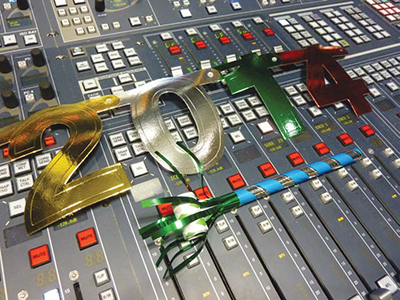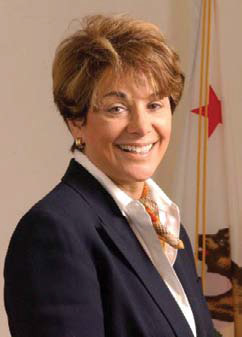The year 2013 was certainly an interesting one with the rise of 4K television, the introduction of immersive audio and with CALM Act complaints finally trickling down to broadcasters. Whether this year will be as surprising as last year is anyone’s guess, but there are a few topics I think will be the big stories in television audio this year.
REFINEMENT OF THE CALM ACT
The FCC will continue to monitor and make adjustments to the CALM Act in the coming year, based on consumer complaints and provider data. The legislation still only targets loudness of commercials and not other programming, even though managing loudness across all content is the only way to provide consistency to the listener.
The fact that the FCC continues to receive complaints about loud commercials is partly due to confusion in the wording of the act; partly due to the complexity of the issue; and partly due to the fact that the LKFS measurement is not perfect.
On Nov. 1, 2013, the FCC issued a “Notice of Proposed Rulemaking” that says they are going to adopt A/85:2013 into the CALM Act. This is peculiar because many broadcasters have already started using A/85:2013.
This new notice by the FCC states that broadcasters should continue using the 2011 version of A/85 until the new rule is adopted, which means that broadcasters using the 2013 revision are actually not in compliance. The notice then waives the requirement to use the earlier version for anyone that already adopted A/85:2013. Is it any wonder that content creators and broadcasters are confused?

There is also confusion over exactly how to measure content, even though A/85 spells it out as clearly as it can. Many times the material is to blame, with some commercials having non-traditional mixes (10 seconds of outdoor ambience with no voiceover), or the dramatic pause-for-effect prior to a loud commercial. Content like this not only complicates measurements, but it can also slow down the process of getting it to air.
Then there is the LKFS measurement itself, on which this entire house of cards is based. The measurement is not perfect, which is why it is constantly being improved, but some consider it the best tool the industry has come up with so far to measure loudness in a manner that approximates what humans hear.
The professional video industry's #1 source for news, trends and product and tech information. Sign up below.
There are some dissenters that think the LKFS measurement has serious problems, but it has one thing that alternative measurements don’t. It is the measurement required by law. Obviously, there are still some issues with CALM, so expect to see movement on it this year.
AUDIO OBJECTS, NOT IMMERSIVE AUDIO
There is a lot of talk right now about immersive audio, primarily because 4K video seems to be taking off and immersion is the audio industry’s contribution to that format. Delivering immersive audio to the home will likely require new content creation workflows; new delivery methods; new equipment for creator, broadcaster and listener; new metadata authoring; and more speakers in the living room.
While all of this would be a shot in the arm for audio manufacturers, the average home listener may find little benefit from it, but many complications. However, there is one part of immersive audio that could provide great benefits to the professional and consumer alike, and that is the use of audio objects.
Audio objects are additional channels of audio that can be made up of just about anything, from individual sounds to groups of sounds, to mixed channels of sounds. They were initially conceived as a way to augment surround mixes and deliver specific sounds to specific additional speakers, just as Dolby Atmos does in theaters.
The true power behind audio objects comes from their ability to act as replacement elements for existing elements in the primary mix. It’s similar to having more than one hundred mix minuses from which a completely new mix can be constructed. This could be especially useful for multilanguage content delivery, with a secondary language audio object taking the place of the primary language audio object. Music and sound effects replacement are other targets for this technology.

Rep. Anna Eshoo (D-Calif.), co-sponsor of the CALM Act With expanding worldwide distribution of content, along with increased scrutiny by attorneys and rights-holders, audio objects seems to be a technology whose time has arrived.
LOUDNESS MANAGEMENT FOR MOBILE, ONLINE DELIVERY
Finally, there is the area of loudness management for the countless personal and Web-connected devices in use. Phones, tablets and streaming appliances are like the new Wild West when it comes to audio. Device outputs run the gamut from tiny speakers, headphones, HDMI, optical and unbalanced phono among others, and each one delivers a different user experience. Some of those user experiences occur in horrific listening environments too.
The one thing all of these devices have in common is the lack of standardized loudness management for streaming and broadcast content. Playing a movie from iTunes on a device, and then changing to another movie or television show in the same application does not guarantee the audio level will be the same, or even close. Watching a streaming service such as Netflix or Hulu can deliver an even worse audio experience, with many commercials and bumpers being significantly higher in loudness than the main content.
Mobile broadcasting has a bit of a head start in this area after seeing similar work done for the CALM Act, and work is currently being done to develop a loudness target for mobile. Still, with more consumers using streaming and personal devices, the complaints are bound to make it to the FCC’s ears.
Hopefully the industry will act on loudness management for streaming and personal devices before the government decides to force it through legislation.
That’s the short list of issues that I think could become a bigger part of the audio-for- television landscape this year. We’ll know in January 2015 how big these topics really were.
Jay Yeary is an audio engineer currently working with the engineering department of a large media company. He is not a professional prognosticator, but is willing to play one on TV.
